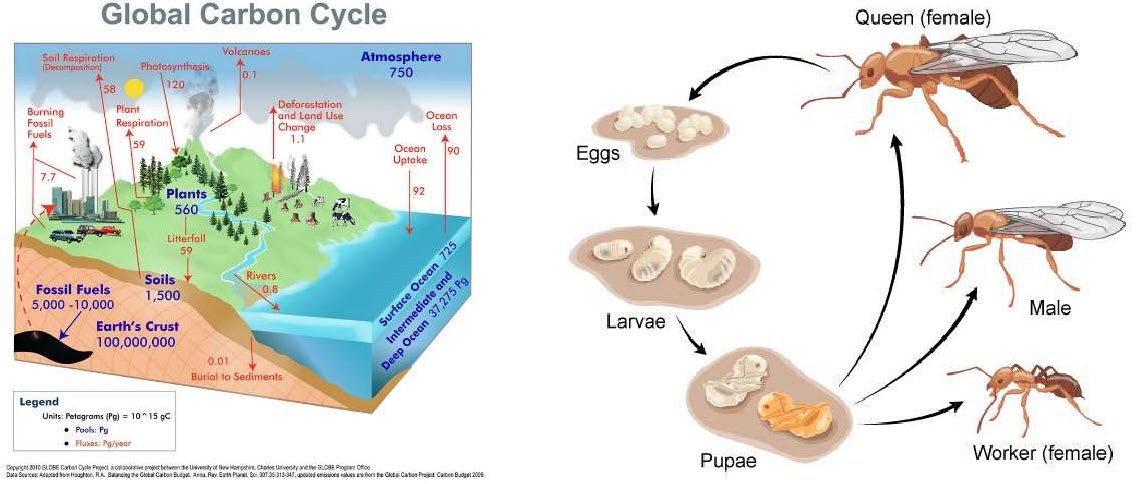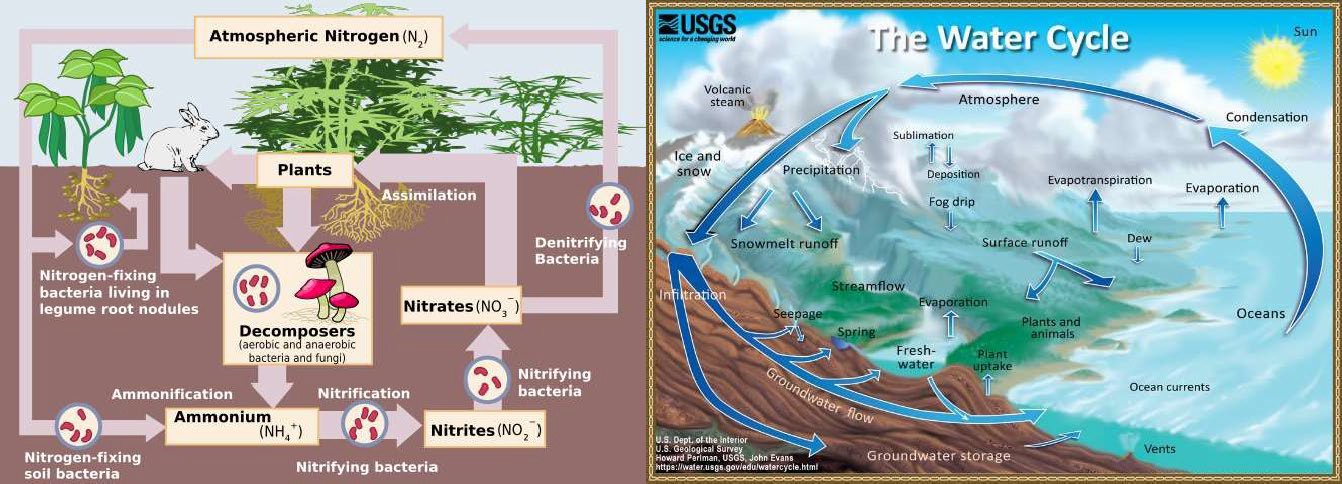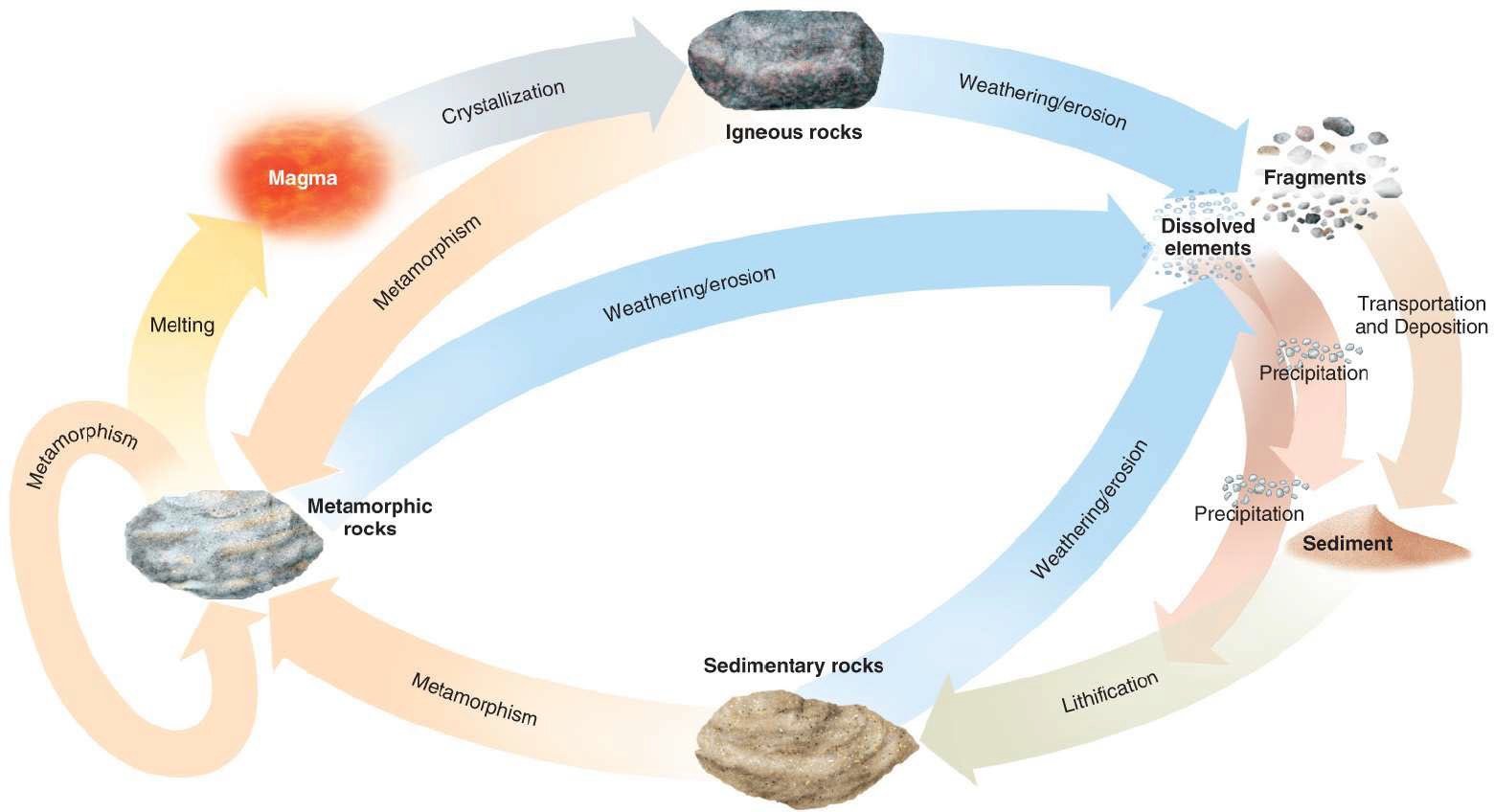12 Lab 12—Earth Systems Science
The Water Cycle as an Example
We can think of the Universe as the largest possible system (Figure 11.1). All other systems available for study are subsets of and interconnected with everything in the Universe. Each galaxy of the hundreds of billions of galaxies in our known universe is a system.
Just a smallfraction ofWaySystem
Figure 12.1. The largest system we know, The Universe, contains The Milky Way Galaxy, The Solar System, and the Earth within it.
Of the billions of star systems contained within the Milky Way Galaxy, one, The Solar System, contains our planet, Earth.
“Earth is a complex system of interacting physical, chemical and biological processes, and provides a natural laboratory whose experiments have been running since the beginning of time.
“The Earth system is often represented by interlinking and interacting ‘spheres’ of processes and phenomena. The atmosphere, hydrosphere, biosphere and geosphere form the simplest collection, though some would add the cryosphere as a special element dealing with polar regions and processes, and others would add the anthroposphere emphasizing human dimensions and impact on the planet. The difficulty with any representation that divides the system is the danger of continuing a deconstructed perception of the holistic Earth system – in reality no part of the Earth system can be considered in isolation from any other part.” (Johnson et al., 2000)
Figure 12.2. Subspheres of Earth, or the geosphere. All are interconnected systems within Earth Systems Science.
Once the geosphere is divided into many smaller systems, it becomes more manageable, but it still may feel challenging and abstract to think about any one of these spheres. One approach to tackle this scientifically is to think about some of these systems as cycles (Figure 12.3). The biosphere, for example, contains many life cycles. The lithosphere can be imagined as being illustrated by the rock cycle. Others, such as the carbon cycle, the water cycle, and the nitrogen cycle, involve processes that occur in many, if not all, of the spheres. Today we will be focusing on the water cycle.



Figure 12.3. Some examples of cycles to aid in study of Earth’s systems. From L to R, Top to Bottom: carbon cycle, life cycle of an ant, nitrogen cycle, water cycle, and rock cycle.
Figure 12.4. The water cycle (Evans and Perlman, 2014)
The above figure (12.4) is a graphical representation of the water cycle. Although the cycle has no beginning and no end, all water in earth’s hydrosphere was originally released from magma as volcanic steam. Water is stored in the atmosphere, in glaciers, in oceans, and in rock (as groundwater). Within each portion of our hydrosphere, we can zoom in to find increasing complexity and cycles within the cycle. For example, see the karst block diagram on the left (Figure 12.5).
Figure 12.5. Karst topographic features (Bosch, 2018)
143
Figure12.6. World Karst Aquifer Map. Cartography in QGIS by author. data from Goldscheider, 2021 (https://www.whymap.org/whymap/EN/Maps_Data/Wokam/wokam_node_en.html; last access: 16 July 2021).
144
NKUMammoth Cave
FIELD TRIP: CINCINNATI MUSEUM CENTER MUSEUM OF NATURAL HISTORY
Walk into the Museum of Natural History and down the ramp through the dinosaur hall. At the end of the dinosaur exhibits is a large digital globe. Use the globe and the interactive story exhibits that go with it to answer the following questions.
Find northern Kentucky during the Ordovician period. What was this part of Earth like at that time?
What kind of sediments were being deposited then?
What rocks did these sediments lithify into?
Find central Kentucky during the Mississippian period. What was this part of Earth like at that time?
What kind of sediments were being deposited then?
What rocks did these sediments lithify into?
How are the Ordovician rocks in northern Kentucky and the Mississippian rocks in central Kentucky similar?
How are the Ordovician rocks in northern Kentucky and the Mississippian rocks in central Kentucky different?
The landscapes in these two regions are very different. Northern Kentucky has many creeks and rivers with stair-stepping knickpoints (waterfalls) while central Kentucky is a karst region with numerous extensive cave systems and very few surface streams. How do the differences in bedrock explain the differences in landscape?
PART II: Research at the Museum
Continue walking and you will find windows to two research labs: paleontology and genetics.
What projects are being worked on in these labs today?
There are several exhibits, videos, and displays outside The Cave. Explore these to answer the following questions.
How does karst fit into the water cycle?
What are some environmental concerns unique to karst landscapes?
Find an example of Mississippian rocks like those that are in central Kentucky. What fossils might you find in those rocks?
What was the depositional environment for those rocks?
Compare the age of the rocks to the age of the caves formed in those rocks.
How do limestone caves form?
When you are standing on the threshold of The Cave exhibit, there is a choice of which path to take. If you are willing and able, take the stairs down to the right. This will take you on a path that does of good job of simulating a caving experience. If you need to take the path to the left, it is physically less challenging, but has all the same educational content as the more challenging path.
Pause and look to your right just inside The Cave. What type of karst feature is modeled as the entrance to this cave system?
As you walk through the cave passage, note the shapes in the walls. These cuspate, asymmetrical, concave sculpted features that tessellate the wall are called scallops. In a limestone cave, how do you think they would form?
How can people infer the past conditions of a cave passage by examining scallops?
Find the decoration room. What features are modeled here?
In a limestone cave, how would these features form? (If you want more information about this, revisit one of the videos after you exit the cave.)
Find a vertical shaft in The Cave. How do you think these develop?
On your way out of the cave, you will see an exhibit of gypsum. How do gypsum minerals grow in caves?
Name three reasons why karst landscapes are vulnerable. Describe why and how these resources should be protected.
